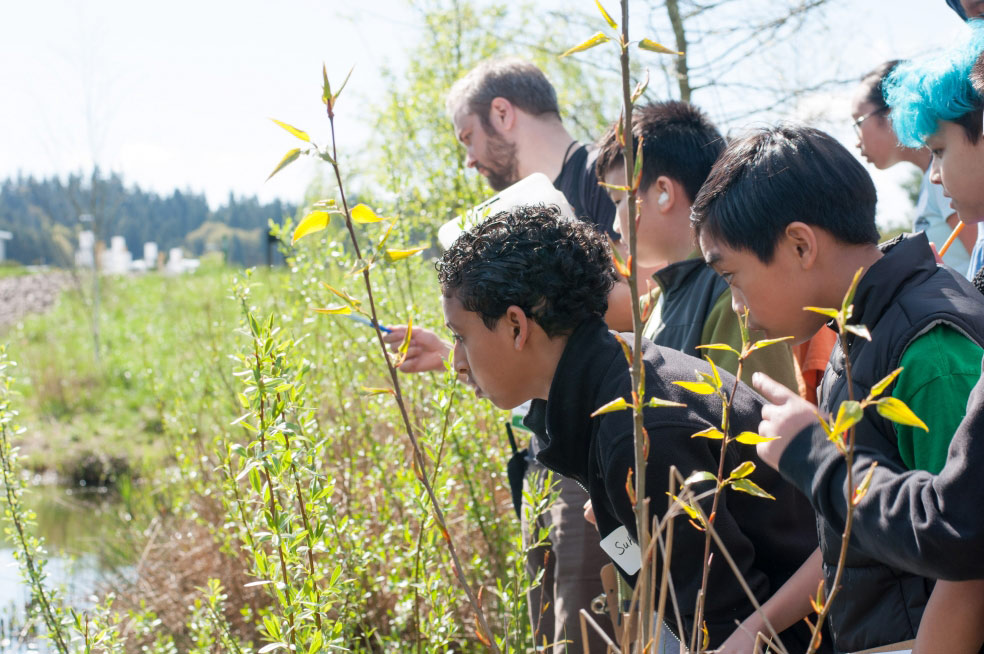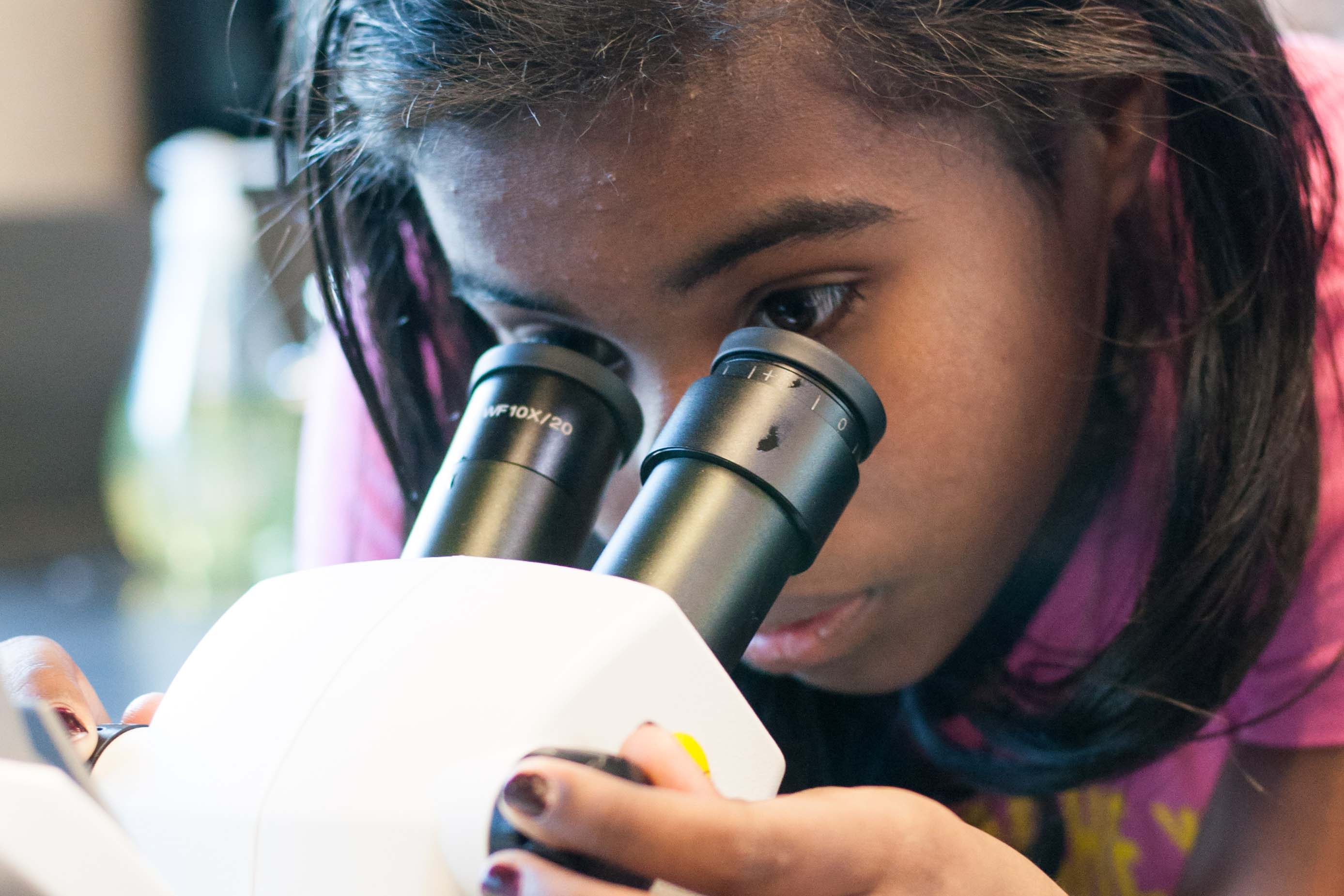WOODINVILLE
Finding Nature in Unexpected Places

By Kate Bedient, Director of Urban Programs at IslandWood
In our line of work, we often hear people talking passionately about getting children outside into nature. While this is a critical mission, the reality is that ‘nature’ often feels far removed from the lives of many families who live in urban areas.
For the last five years, IslandWood’s Urban School Programs have delivered education programs at King County’s Wastewater Treatment Plant, the Brightwater Center in Woodinville. Some might ask, where is the nature in a place that cleans and treats millions of gallons of wastewater a day?

Photograph provided by Islandwood
The answer is everywhere. Once you have had the opportunity to see the children’s faces when they look into a microscope and first see the life teaming inside a drop of waste water, or to listen to 5th graders in hard hats debate the pros and cons of their waste ending up in Puget Sound, or watch 3rd graders peer in amazement down a storm drain, you, too will know that nature exists in some of the most unexpected places. And these moments can spark in young people a sense of wonder, a passion for learning and science, and a desire to care for our environment.
Consider a place or a moment when nature has inspired you. For some, thatmay have been time in a National Park, or working in a garden. For others, it may have been playing in the grass at a family picnic in someone’s backyard. And for some of us, it might even be realizing that there is life in a drop of sewer water.
There is no correct way to be inspired by the natural world.
In each of these moments, all of us were building the foundation for stewardship. A desire to care for and nurture not only places that are important to us, but also the people that we experience them with. Access to moments like these is a civil right and the future of our communities, our cities, and our planet depends on young people having opportunities to exercise this right as often as possible.

In North Rainier, there is also broad consensus among stakeholders that the area become a Sustainability Hub, with green jobs and training, green development, a Living Building Pilot Project, and green infrastructure which supports business development and the diversity that is an integral part of the neighborhood.
Subscribe to our e-mail list.
Stay up-to-date on how we are building a movement around nature in cities - including the latest stories from the blog and upcoming events.
© Kevin Arnold
